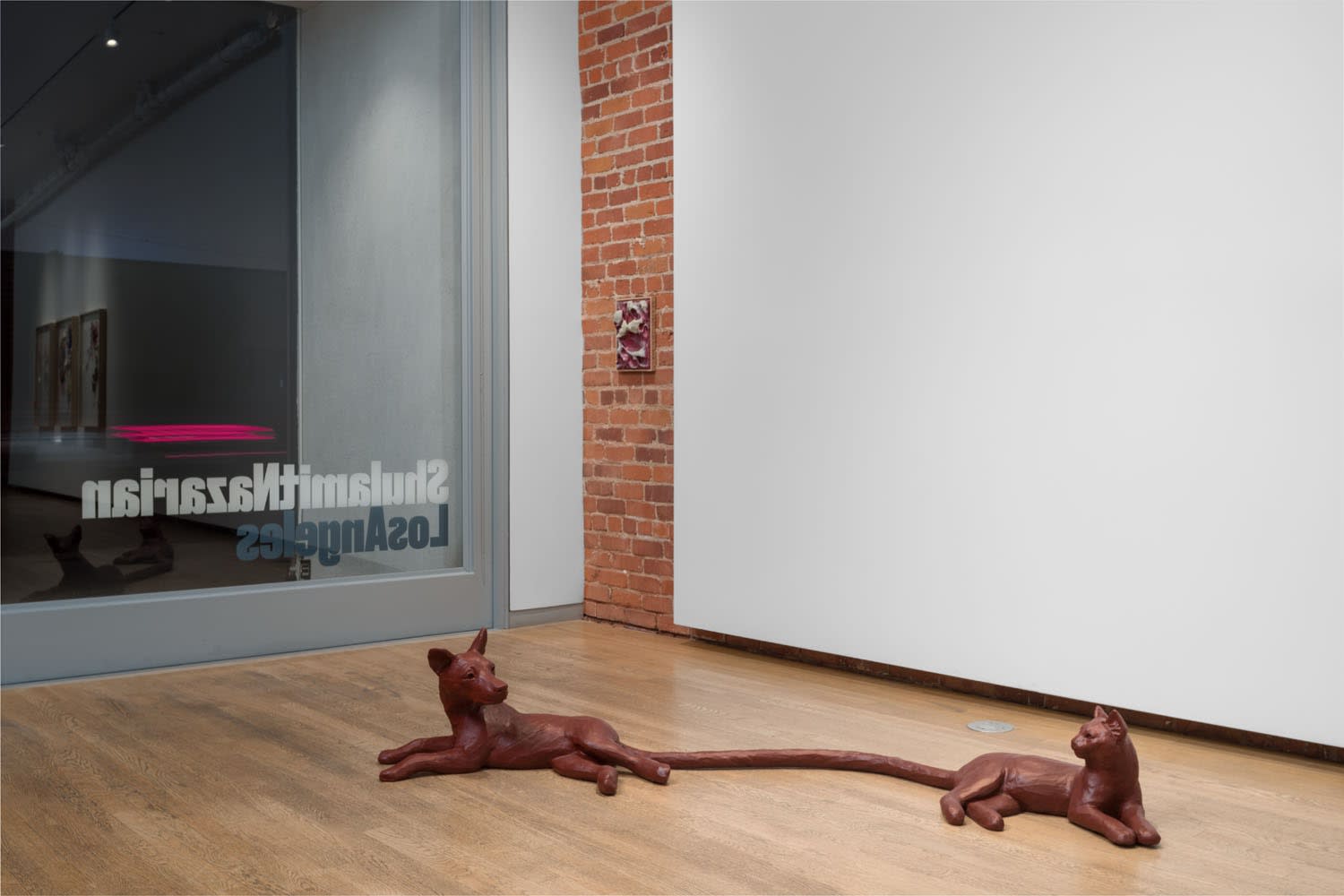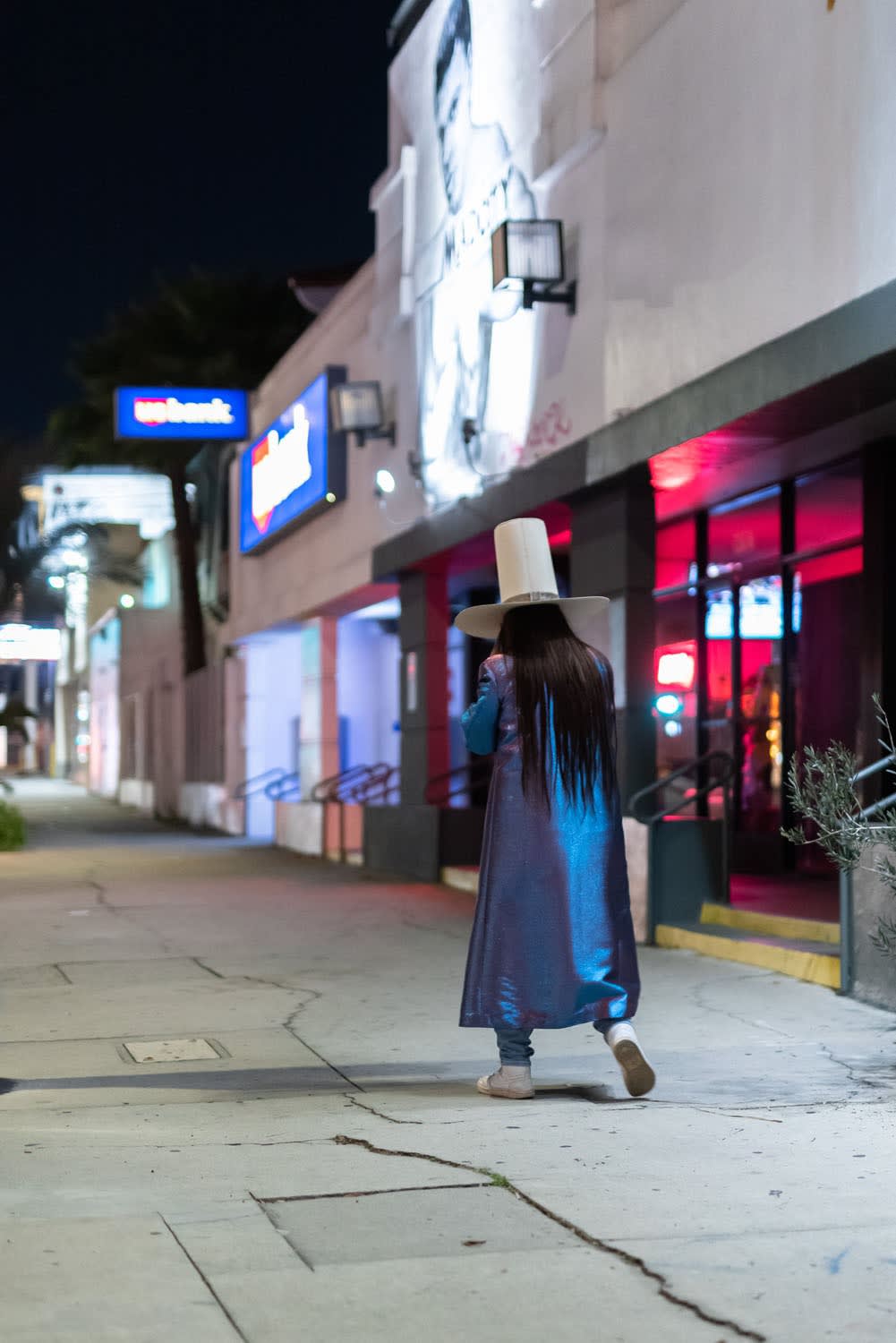
Nothing could be quite so apt as to evoke the well-worn metaphor of Lewis Carroll’s Wonderland to situate yourself into Tori Wrånes’s Mussel Tears. Alice’s Wonderland constantly pulls at a thread that gradually unspools reality. For some, this is an enchanting childhood playground. For Wrånes, she sets her rosy glasses on the grass in front of the Rabbit’s hole before diving into another dimension populated with an uneasy, upsetting and occasionally off-putting domain. But this captivating and vexing approach to art making, is merely silicone mold and blubbery epidermis of a sincere muscle vibrating beneath the surface. The dark fantasies of 1980’s movies such as Labyrinth and The NeverEnding Story describe a frustration with reality. In those stories, and in Wrånes’s work, survival relies on understanding the frightening and unknown. To best engage with Wrånes’s world, you must be willing to understand, to listen. Listening is key to unlocking the passageway into her invented dimension. The Oslo-based performer uses prosthetics, sculpture and various constructions to compose a rich choreography that responds to identity, place and Nordic folklore.

Tori Wrånes: Mussel Tears, Shulamit Nazarian, Los Angeles, January 29–March 12, 2022. Courtesy of the artist and Shulamit Nazarian, Los Angeles. Photo: Ed Mumford.
A sculpture of a recumbent dog and cat who share the same tail is in the entrance hall to the main gallery. Her paintings (wall sculptures) are hung low on the wall, creating broader accessibility to experience the work. Conceptually, the work’s placement feeds into the narrative of this space. Because the gallery is no longer a gallery. It is the home of two giants that cannot rise up off of the floor. The central and largest work in Mussel Tears is a sculpture of another conjoined pair. An oversized figure props himself off of the floor in a partial backbend, using Rodin sized hands to stabilize his mammoth body. A gray hoodie is tied tightly around his face, exposing only a nose and his mouth that is blowing into the reed end of a wind instrument. The instrument, resembling a recorder, enters the mouth of his twin, another supersized figure, loops out and back in again along his spine and then exits the body like a tail. The foot of the instrument (the flared end) expels the sound of a foghorn. The tone expels over the small body of a third sculpture. A headless baby lies on its back, four hands and arms and two legs happily extend towards the reverberating tune. The anonymity of the figures, the hooded adults and headless child, implies an evolved unreliance on sight. Like the evolution of cave dwelling creatures that slowly rendered them sightless, Wrånes’s figures survive with breath and sound.
Tori Wrånes: Mussel Tears, Shulamit Nazarian, Los Angeles, January 29–March 12, 2022. Courtesy of the artist and Shulamit Nazarian, Los Angeles. Photo: Ed Mumford.
During a one-night performance, Wrånes padded out from the back of the gallery, gesturing her hands in circular motions like a wind propeller-perhaps inviting or expelling spirits lingering in the air. Dressed in a purple and blue iridescent coat, a tall sombrero that dwarfs a 10-gallon hat, with prosthetic ears glued to her cheeks, she stopped in front of two microphones and sang. She sang as a prophet with rhythmic intonation and incredible sincerity. Finishing her song, she played the harmonica while ambling out of the gallery-a psychotronic Pied Piper. Wrånes’s sincerity wraps Mussel Tears in love. A stage that has the tools to be imposing, disruptive and phony, Wrånes creates a heartfelt world that exists whether or not you engage with it. And it will keep on existing, out of sight yet always inviting, like Wonderland.



